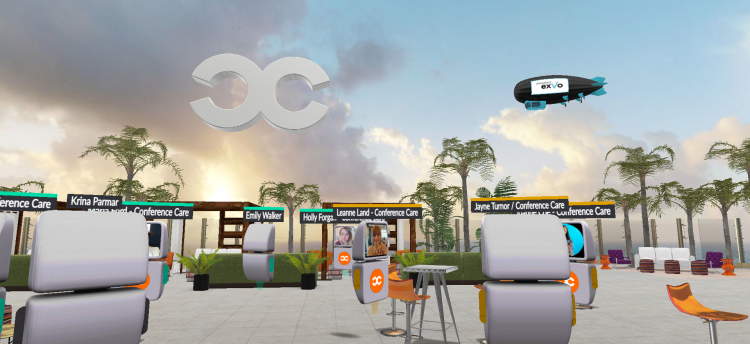
Virtual Event Etiquette Tips for Event Planners and Attendees
Even before the pandemic began, virtual events and meetings were on the rise. But the last year has brought them to an entirely new level:
- Zoom had over 300 million meeting participants per day in 2020
- Google Meet had over 100 million daily meeting participants in 2020
- Microsoft Teams had 75 million active daily users in 2020
- Cisco WebEx currently has over 300 million users
Source: The State of Video Conferencing in 2020
And while the jokes about wearing slippers and pajamas during the early days of WFH continue to get tossed around, social norms, rules, etiquette, and manners still matter in virtual events – though it’s slightly different for both event planners and attendees.
With online meetings and events scheduled for the foreseeable future, here are etiquette tips for both planners and attendees to keep in mind.
Virtual Event Attendees
Let’s face it, if you work in a traditional office, you’re familiar with the basic rules of group meeting behavior:
- Look professional
- Don’t show up late
- Eat meals or snacks before or after the meeting
- Don’t interrupt others
- Stay on task and on time with the agenda
Those basics continue to apply when attending virtual meetings and events, with these additions – especially if your webcam is on:
- Use attentive body language
- Sit up straight – or better yet – stand up to increase the energy
- Check your background and eliminate anything that others don’t want to see – like piles of clothes, unmade beds, or other distractions – or use a virtual background to provide coverage
- Make eye contact with the webcam and don’t let your eyes wander too much
- Be at the ready to mute your microphone unless you’re speaking and/or interacting with fellow attendees
- If available, and as appropriate, use chat features, Q&A, or raised hand options to contribute to the conversation and minimize interruptions
It’s this last point – participating and contributing – that deserves special attention when it comes to virtual event etiquette.
For many introverts, it’s easier to hide behind a digital screen and avoid interacting and joining in conversations. As Diana Shi writes for Fast Company, “speaking up in a [virtual] meeting can be hard for some introverts. It may prompt others to object or—sometimes worse—not respond at all, which can provoke doubts and insecurities.”
With a little extra attention, this is one etiquette area where planners can set the stage to help all attendees, including introverts, feel comfortable in a virtual event setting.
Event Planners
From a planner perspective, virtual events raise a whole new set of etiquette questions, including how do you:
- Facilitate attendee connections with those who are just another name on the screen without forcing those out of their comfort zone?
- Find ways to help attendees step into group conversations – especially if “entering” a virtual breakout room means a guest is joining into a larger existing group conversation?
- Set the stage to make entry – or exit – out of virtual conversations easier?
- Arrange opportunities for one attendee to speak directly to another in a private conversation – without it appearing rude by not allowing other guests to join in?
Here are a few ideas planners can incorporate to ease the transition of traditional social norms into the virtual event space:
- Encourage ice-breaking activities, with a special focus on pre-arranging those who may be more likely to contribute to start things off.
- Where possible, make introductions. Just like it’s much easier at on-site events for attendees to walk up and join a group when they know one person and stand by them to ease into the conversation, knowing who else is participating in a virtual session can create connections that might have been missed in the absence of a large anonymous list of attendees.
- Construct virtual breakout rooms around specific interests, topics, or themes. This is very similar to the care given at in-person events to encourage individuals to connect with peers, like networking sessions, “birds of a feather” groups, braindating, and more.
- Use green rooms to provide attendees with direct access to speakers – think of it as the virtual version of attendees lining up at in-person events to ask questions following a speaker session.
- Let your audience know it’s okay to pop in and out of sessions and activities – whether the topic isn’t as relevant as expected or they need to attend to something offscreen.
- Create a welcome reel with these etiquette tips and display it when attendees enter the event
- Determine if limiting access or attendance in select sessions could be beneficial. Planners have more control over virtual events to limit group sizes to optimize conversations and connections, increasing the opportunity for inclusiveness.
- Designate a safety monitor. We’ve all heard of “Zoom bombing.” Prevent any unexpected attendees or activities by having someone keep an eye out for inappropriate behavior, and removing them if necessary.
- Explore new technologies that help attendees interact and connect with each other. There are new immersive, fully branded experience platforms that enable natural conversations and networking both in video and through chat to bring the traditional live event experience to virtual events.

Just because the boundaries between personal and professional lives have blurred, it doesn’t mean it’s time to slack on the common courtesies of everyday life. A little virtual event etiquette goes a long way to fostering and growing connections while we’re physically apart.
See how Allseated’s new exVo platform with a game-like interface and design brings a new level of interaction and engagement to virtual events.

No Comments